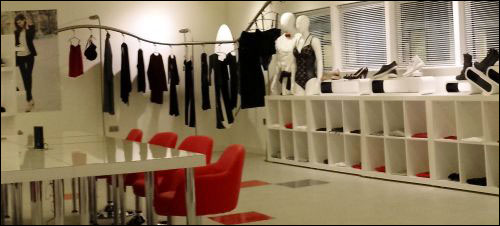Within the coming months, SML Group expects to open two new RFID testing and innovation centers, as well as expand its tag manufacturing capacity, in Europe, the United States and Asia. This follows the creation of SML’s first RFID Technology and Innovation Center, which opened in the United Kingdom in December 2013.
The U.K. center is designed for the development of new solutions, explains Philip Calderbank, SML’s VP of global RFID, as well as the production of passive EPC Gen 2 ultrahigh-frequency (UHF) RFID inlays and conversion to labels, and will feed the growing European market for RFID technology. The company plans to open another RFID Technology and Innovation Center in Clayton, N.C., in May of this year, followed by a third in Hong Kong during the first quarter of 2015. Both the U.K. and North Carolina centers will include label manufacturing and conversion, while the company is also in the process of opening three additional manufacturing facilities—one in Shanghai, China, and the others in Vietnam and Indonesia.

The new facilities are being constructed in response to recent and expected growth in demand by SML’s customers for item-level tags not only for garments, but also for jewelry, cosmetics and food. SML enjoyed a 50 percent growth in revenue last year from its sales of RFID-based products, and expects to see continued growth thanks to a boost in RFID deployments in the retail sector. That growth, Calderbank says, is due to the technology’s deployment for inventory tracking and supply chain visibility by a handful of large-scale retailers globally, as well as a result of the signing of patent agreements between most RFID technology vendors and Round Rock Research. The lack of such agreements in the past had put a damper on RFID deployments within the United States (see Round Rock Completes Licensing Deals With Majority of RFID Vendors).
In addition, Calderbank says, technology gains this year in the sensitivity of EPC Gen 2 passive UHF RFID tag chips and reader antennas are expected to make electronic article surveillance (EAS) functionality a desirable option for retailers. In 2014, he predicts, retailers can begin installing RFID readers at doorways to extend the use of an RFID tag—previously used primarily for in-store product visibility—to also identify if an item is removed from the store without being sold, and issue an alert to the appropriate personnel.
In Europe, SML has three large retail-sector customers that will benefit from its new U.K. RFID Technology and Innovation Center, located in Leicestershire. One has been an SML customer for about a year, while another has just begun employing RFID. Both companies have asked not to be named. The third large customer is British grocer and general merchandise retailer Tesco, which will expand its use of the technology throughout the next 12 months to two years. Tesco’s deployment consists of applying tags to garments at the point of manufacture. The retailer will also tag food items, according to media reports. A Tesco spokesperson declined to elaborate on the company’s plans.
SML’s U.K. Technology and Innovation Center features a large RFID laboratory, including an anechoic chamber for testing a variety of applications involving hanging and stacked RFID-tagged goods, as well as multiple reader antenna arrangements. According to Calderbank, the company will work with Manchester Metropolitan University‘s textiles department to develop innovative programs that would lead to RFID products entering the market within the next 18 months to two years.
In addition, SML’s U.K. center will design new EPC Gen 2 UHF inlays for use on jewelry, food and cosmetics. The company expects that such tags will become commercially available for use within the next six to nine months. The facility is designed not only for SML’s own engineers, Calderbank notes, but also for any retailers, brands, manufacturers and logistics firms that need to test the technology for their own specific applications.
When the company’s expanded facility in North Carolina launches in May, it will include increased manufacturing capacity, in addition to a new innovation center. The U.S. facility’s production capacity will be considerably higher (compared with that of the U.K. site) in terms of inlay manufacturing, and slightly higher for label conversion (the embedding of RFID inlays in labels).
Moreover, Calderbank says, SML intends to grow its service bureaus during the coming few years. Although he declines to indicate what the production capacity will be as a result of the new manufacturing expansions, the company will produce “many, many millions” of inlays and labels, he says.
Throughout the past year or so, SML has also received requests from its customers to provide EPC Gen 2 UHF labels that could be used for tagging jewelry, cosmetics and food. Tesco, for example, sells food, jewelry, cosmetics and garments at its stores. Regarding the coming year, Calderbank says, “I think we’re going to see more and more adoption of RFID in increasingly interesting applications.”
Calderbank cites the development of new EPC Gen 2 UHF RFID tag chips expected to be released this year that will be more sensitive than their predecessors, and thus more practical for use in EAS systems. In addition, he says, new EPC Gen 2 UHF RFID reader antennas will make those chips even more effective. As a result of technological advances, SML expects a surge in the use of EPC Gen 2 UHF RFID tags for surveillance at store exits. “Right now,” he states, “we’re demonstrating that with RFID, we can trigger an alarm” just as well as non-RFID-based EAS solutions can. The transition to RFID for EAS would be a logical step for stores, he adds, since they already have RFID labels on the products. By using RFID, retailers could not only receive an alert if an unpaid-for item were to leave the store, but they would also know exactly which product had been taken, so that it could be replenished on the store shelf. “There’s a tremendous business case for that,” Calderbank states.


